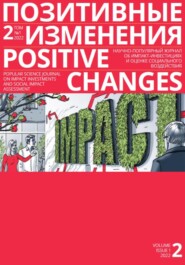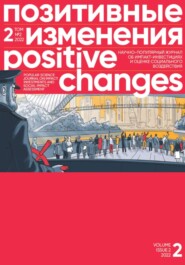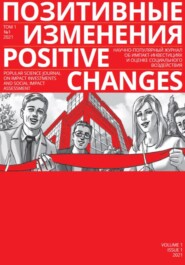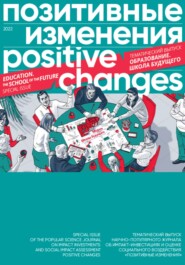По всем вопросам обращайтесь на: info@litportal.ru
(©) 2003-2025.
✖
Позитивные изменения. Города будущего. Тематический выпуск, 2022 / Positive changes. The cities of the future. Special issue, 2022
Настройки чтения
Размер шрифта
Высота строк
Поля
BIODIVERCITY
COUNTRY – Malaysia
Malaysia plans to build its own "islands of the future" by 2030. BiodiverCity, with a total area of 18 million square meters, will consist of three man-made islands, each home to 15–18 thousand residents. The idea proposed by a group of architectural bureaus – BIG, Hijjas and Ramboll – is that the people should coexist in harmony with the nature. The residents will be able to move freely through the city.
The city’s master plan states that "a water, air and land-based autonomous public transportation grid is intended to create a car-free environment, where streets serve as a safe and welcoming environment for cyclists and pedestrians."
In addition to educational and administrative centers, research institutes, and digital parks, BiodiverCity will have public beaches and a 25 km long promenade. A nearby oasis will feature a miniature archipelago with floating houses on stilts and terraces, according to ArchDaily[58 - Harrouk, C. (2020). BIG, Hijjas and Ramboll Win International Competition to Design a Master Plan for Penang South Islands, Malaysia. 21 Aug 2020. ArchDaily. Retrieved from: https://www.archdaily.com/946132/big-hijjas-and-ramboll-win-international-competition-to-design-a-master-plan-for-penang-south-islands-malaysia. (accessed 28.10.2022).].
The buildings are planned to be built mainly from low-carbon materials such as bamboo and Malaysian timber, combined with "green concrete," using recycled materials as the filler.
AEQUOREA
https://vincent.callebaut.org/object/151223_aequorea/aequorea/projects
COUNTRY – Brazil
Off the coast of Rio de Janeiro, Brazil, a city of the future will be 3D-printed. Up to twenty thousand people will live here. The purpose of the project is to study the ocean.
The Aequorea project was proposed by the visionary architect Vincent Callebaut. According to his idea, the jellyfish-shaped buildings of the city will be submerged in water. Each building will be complete with recycling plants, production laboratories, offices, co-working spaces, workshops, research centers, marine farms, organic farming, community gardens and vegetable gardens.
The Great Pacific Garbage Patch is called the seventh "continent" of the planet. Approximate estimates of its area range from 700 thousand to 1.5 million square kilometers at least. Aequorea will be built of recycled plastic waste and algae, using 3D-printing technology.
The project author’s concept envisages people travelling in ships and submarines powered by biofuel. Energy and food will be provided by algae, plankton, and shellfish, which are planned to grow on the island.
"Never forget this: the oceans produce 50 % of our planet’s oxygen. They are its most active lungs!" the project’s website states[59 - AEQUOREA. (2015). Retrieved from: https://vincent.callebaut.org/object/151223_aequorea/aequorea/projects. (accessed 28.10.2022).].
MALM?, SWEDEN, THE REAL CITY OF THE FUTURE
https://clck.ru/32jciw
COUNTRY – Sweden
The city of Malm?, Sweden, is already being called the city of the future, because this is where you can see a synergy between different approaches to urban problems.
Malm? has more than 400 km of bicycle paths and several thousand parking spaces for bicycles. Bicycles are used for 40 % of all trips to work. By 2030, the city wants to achieve full energy independence, increasing the share of alternative energy use to 100 %, according to the city’s municipal program.
In the 1990s, Malm? was known as a port in Southern Sweden; today it is an IT, innovation, ecology and tourism hub. It is all about biofuels, bicycles, and green roofs. The city took over its own restructuring and renovation. The harbor was rebuilt, the labyrinths of industrial shipyards were cleared away and redeveloped with 600 houses, stores, and office buildings equipped with solar panels and wind turbines made of eco-friendly materials.
All homes are connected to a circulating water system, where the same medium is used for heating in the winter and for air conditioning in the summer. Garbage shredders are installed in every kitchen in Malm?. The resulting material is then used as biofuel for cars and urban transport. Food waste is also transformed into biogas, which replaces the traditional natural gas at home. The Malm? authorities even put ashes to work, the Futurist portal reports[60 - Abramov, R. (2017). Malm?: Saying Goodbye to the Depression of an Industrial Sinkhole. 29.06.2017. Futurist. Retrieved from: https:// futurist.ru/articles/779. (accessed 28.10.2022).].
notes
Примечания
1
Рыжков, А. (2022). Россия – страна позитивных изменений. Позитивные изменения, 2(2), 5-13.
2
Ryzhkov, A. (2022). Russia – the Country of Positive Changes. Positive Changes, 2(2), 5-13.
3
DESA, U. (2019). World urbanization prospects 2018: highlights (ST/ESA/SER. A/421), New York: Department of Economic and Social Affairs. Population Division, United Nations.
4
Харви, Д. (2022). Состояние постмодерна. Исследование истоков культурных изменений. Режим доступа: https://iq.hse.ru/news/454730955.html. (дата доступа: 31.10.2022).
5
Харви, Д. (2022). Состояние постмодерна. Исследование истоков культурных изменений. Режим доступа: https://iq.hse.ru/news/454730955.html. (дата доступа: 31.10.2022).
6
Ложкин, А. (2013). Поиски будущего в прошлом. Очерки о городской среде.
Режим доступа: https://archi.ru/russia/46873/ocherk-6-poiski-buduschego-v-proshlom. (дата доступа: 31.10.2022).
7
DESA, U. (2019). World urbanization prospects 2018: highlights (ST/ESA/SER. A/421), New York: Department of Economic and Social Affairs. Population Division, United Nations.
8
Harvey, D. (2022). The Condition of Postmodernity: An Enquiry into the Origins of Cultural Change. Retrieved from: https://iq.hse.ru/ news/454730955.html. (accessed 31.10.2022).
9
Harvey, D. (2022). The Condition of Postmodernity: An Enquiry into the Origins of Cultural Change. Retrieved from: https://iq.hse.ru/ news/454730955.html. (accessed 31.10.2022).
10
Lozhkin, А. (2013). Searching for the future in the past. Essays on Urban Environment. Retrieved from: https://archi.ru/russia/46873/ocherk-6-poiski-buduschego-v-proshlom. (accessed 31.10.2022).
11
Чезаре Ломброзо (1835–1909) – итальянский психиатр, преподаватель, родоначальник антропологического направления в криминологии и уголовном праве, основной мыслью которого стала идея о прирожденном преступнике.
12
Modus vivendi – в переводе с латыни «образ жизни», «способ существования».
13
Cesare Lombroso (1835–1909) was an Italian psychiatrist, teacher, and founder of the anthropological trend in criminology and criminal law, whose main idea was that of a natural-born criminal.









